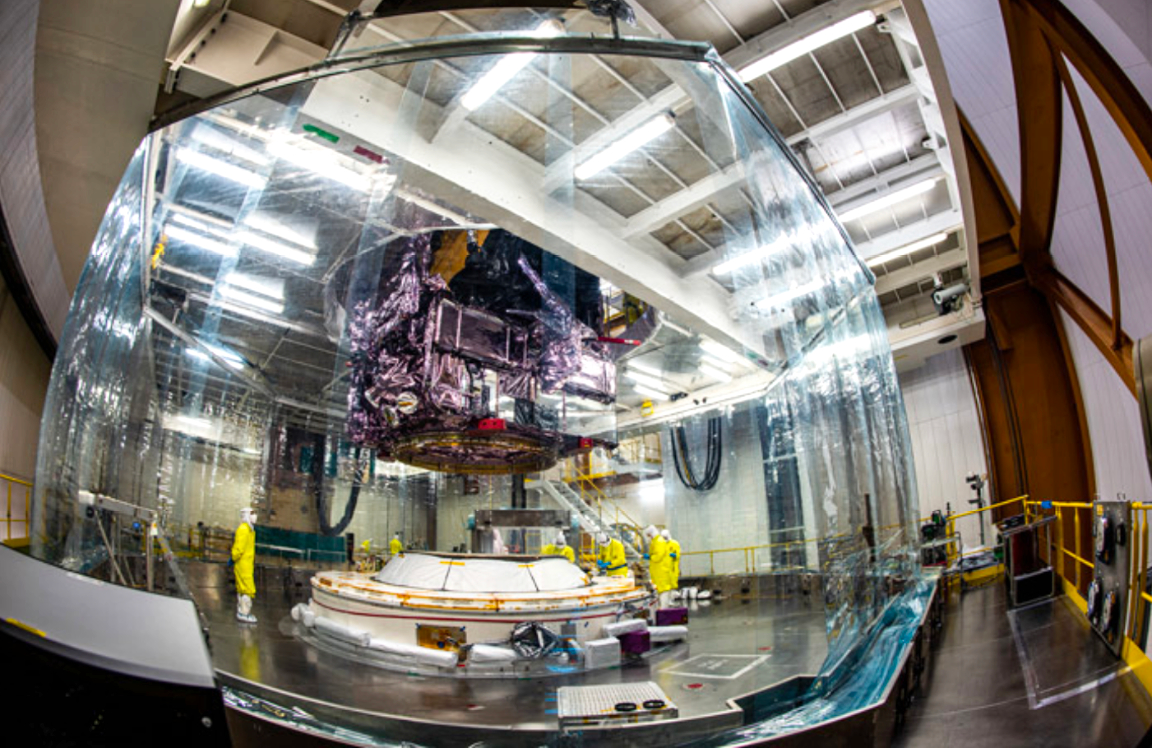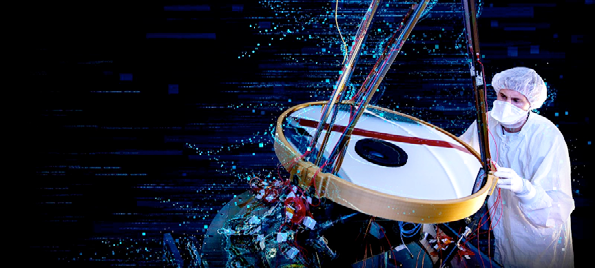Helping the James Webb Space Telescope unveil the universe
NASA calls it “the premier observatory of the next decade.” The James Webb Space Telescope (JWST), launched in December of 2021, will provide new insight into some of the biggest secrets of the universe.

Technicians secure NASA’s James Webb Space Telescope on top of the Ariane 5 rocket that launched it into space from Europe’s Spaceport in French Guiana on December 22, 2021. Photo is courtesy of NASA.
Operated by ground controls from Raytheon Intelligence & Space (RI&S), the telescope is peering at the first stars and galaxies in the universe, capturing infrared light that has been traveling for billions of years. And it will provide new views of our celestial neighbors.
“Webb will let us look further into space and time to probe the primeval universe,” said Walt Burns, Raytheon Intelligence & Space program manager for the flight operations system. “And it is controlled with RI&S hardware and software.”
Webb is a large, international project led by NASA, with many partners and companies providing different components. RI&S installed the Webb’s ground control system at Space Telescope Science Institute, or STScI, in Baltimore, Maryland. The ground control system is primarily responsible for maintaining the health and safety of the observatory and supports command and control (C&C) of the observatory as well.
Ground controls for satellites or spacecraft are usually built after development is well under way, but legacy Raytheon started early in the process. That allowed integration of components of the observatory to start talking to the ground system software, to reduce integration time and minimize flight risk for the 2021 flight.
“It didn’t make sense to use two different systems during integration and testing,” said Rusty Whitman, systems engineering manager at the STScI. “Raytheon has a long history on the project. We are making good use of everything done in integration and testing and developing lots of procedures.”
The same RI&S-developed software that is now flying the telescope was used to “fly” the rigorous testing that was performed before the launch. The James Webb Space Telescope launched on Dec. 25, 2021, on an Ariane 5 rocket from Europe’s Spaceport in French Guiana, South America.
“No one has ever done anything like JWST,” said Whitman. “Webb is a very large spacecraft, and it’s a very large job to operate it.”

The telescope collects observations in infrared and transmits that data back to Earth.
“The observatory is smart,” said Burns. “We uploaded an observation plan, and Webb has the onboard computer autonomy to pinpoint targets and make the actual observations.”
In addition to maintaining the health and safety of the observatory, Raytheon software also receives the observation data and transfers information to the system that is accessible to astronomers and other scientists. RI&S systems receive the data from Webb and transfer it to the Data Management System operated by STScI. The RI&S-built software establishes contacts twice per day with the Deep Space Network operated by the NASA Jet Propulsion Lab (JPL).
Each contact processes about 28 GB of downlinked data.
Commissioning of the observatory completes in approximately six months after launch, with the first observation data arriving shortly thereafter.
“The data is expected to yield extraordinary results,” Burns said, that will “revolutionize our “The data is expected to yield understanding of the universe.”


